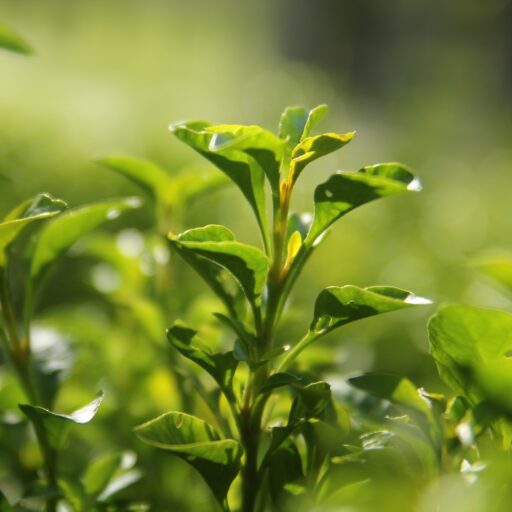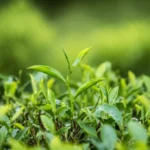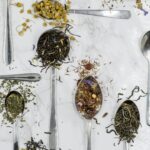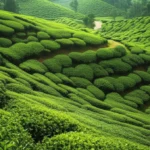Support our educational content for free when you purchase through links on our site. Learn more
American Black Tea: A 2025 Guide 🇺🇸
Ever tasted a black tea grown right here in the USA? While the image of tea often conjures up faraway lands, a vibrant—though smaller—American tea industry is quietly flourishing. This comprehensive guide explores the fascinating world of American-grown black tea, from its rich history and diverse growing regions to the unique flavor profiles and brewing techniques. We’ll uncover the secrets behind the art and science of cultivating this beloved beverage in the United States, and guide you to the best places to find these exceptional teas. Prepare to be surprised by the quality and variety of black teas grown right in your backyard (or at least, within your country)! Did you know that early attempts to cultivate tea in the US date back centuries, with some even believing wild tea in the East could rival Chinese varieties?
Key Takeaways:
- American black tea offers unique flavor profiles shaped by the terroir of various growing regions, including South Carolina, Hawaii, and parts of the Southeast.
- The cultivation process is a blend of art and science, requiring meticulous attention to detail from seed to cup.
- American black teas boast potential health benefits, similar to other teas, thanks to their antioxidant content.
- Discover a diverse range of American black teas, from robust Assam-style brews to delicate specialty blends.
- Support local farmers and sustainable practices by seeking out American-grown teas from reputable brands.
👉 Shop American Black Teas:
- Charleston Tea Plantation: Charleston Tea Plantation Official Website | Amazon Search Results
- Great Mississippi Tea Company: Great Mississippi Tea Company Official Website | Amazon Search Results
- Table Rock Tea Company: Table Rock Tea Company Official Website | Amazon Search Results
Table of Contents
A Brief History of Black Tea Cultivation in the USA
Top 5 Black Tea Growing Regions in the United States
Exploring Different Varieties of American-Grown Black Tea
The Art and Science of Cultivating Black Tea in the USA: From Seed to Cup
Understanding the Unique Flavor Profiles of American Black Teas
Health Benefits and Nutritional Aspects of American Black Tea
Brewing the Perfect Cup: A Guide to Steeping American Black Teas
American Black Tea vs. Imported Black Teas: A Comparison
The Future of Black Tea Production in the United States
Where to Buy the Best American Black Teas: A Guide to Retailers and Brands
Sustainability and Ethical Considerations in American Black Tea Farming
Sign up for Growing Teas™ Email Updates!
Quick Tips and Facts
Did you know that the United States has a thriving, albeit smaller, black tea industry? 🤯 While we often associate tea with countries like China and India, several regions in the US boast unique terroir and growing conditions perfect for producing high-quality black tea. Before we dive into the fascinating world of American-grown black tea, let’s start with some quick facts:
- Optimal Growing Conditions: Black tea thrives in warm, humid climates with well-drained soil. Learn more about ideal growing zones in our article, What Zones Can You Grow Tea Plants In? 🌱 7 Expert Tips for 2025 https://www.growingteas.com/what-zone-can-you-grow-tea-plants-in/.
- Key Growing Regions: South Carolina, Hawaii, and parts of the Southeast are leading producers.
- Flavor Profiles: American black teas often exhibit unique flavor notes depending on the region and cultivar, ranging from bright and citrusy to robust and malty.
- Health Benefits: Like other teas, American black tea offers potential health benefits, including antioxidants and potential mood boosts. Explore the broader health benefits of tea in our dedicated section https://www.growingteas.com/category/health-benefits-of-tea/.
- Brewing Tips: Generally, black teas benefit from a slightly higher water temperature (around 212°F or 100°C) and a steeping time of 3-5 minutes. But always check the specific instructions on your chosen tea.
A Brief History of Black Tea Cultivation in the USA
Believe it or not, the history of tea cultivation in the US dates back further than you might think! While not as extensive as in Asia, attempts to establish tea plantations in America began centuries ago. Early experiments, often met with mixed success, highlighted the challenges of replicating the ideal growing conditions found in traditional tea-producing regions. However, persistent efforts and advancements in agricultural techniques have led to the growth of a niche but dedicated American tea industry.
One interesting historical note from Destination Tea https://destinationtea.com/tea-grown-in-the-usa/ mentions reports of tea growing wild in Western Maryland and Pennsylvania as early as 1863. Dr. Spencer Bonsall believed this wild tea could rival the quality of Chinese tea – a bold claim! The 1858 U.S. Agricultural Report also advocated for domestic tea production, showcasing early interest in establishing a homegrown tea industry.
Top 5 Black Tea Growing Regions in the United States
While the US tea industry is still relatively small compared to global giants, several regions stand out for their black tea production. Here are five key areas:
- South Carolina: Home to the renowned Charleston Tea Plantation, South Carolina boasts a long history of tea cultivation and offers a range of black teas. They even offer tours!
- Hawaii: The unique volcanic soil and tropical climate of Hawaii create ideal conditions for growing unique tea varieties, resulting in distinctive flavor profiles.
- Georgia: With its warm, humid climate, Georgia is emerging as a promising region for black tea production.
- Mississippi: The Great Mississippi Tea Company https://www.greatmsteacompany.com/ is making waves, showcasing the potential of the region. As they say, “We are so pleased to bring tea to North America and beyond, grown right here in the USA.”
- Texas: While perhaps less established than others on this list, Texas’s warm climate shows promise for future black tea cultivation.
Exploring Different Varieties of American-Grown Black Tea
American-grown black teas aren’t just a single flavor profile; they offer a surprising diversity! The specific cultivar, processing methods, and terroir all contribute to the unique characteristics of each tea. Here are some examples:
- Assam-type Black Teas: These robust, malty teas are often grown in warmer regions and resemble the classic Assam teas from India.
- English Breakfast-style Black Teas: These blends often incorporate a mix of black teas to achieve a balanced, full-bodied flavor profile, perfect for a classic breakfast brew.
- Specialty Black Teas: Some growers experiment with unique cultivars or processing techniques, leading to exciting flavor profiles that showcase the versatility of American-grown tea.
The Art and Science of Cultivating Black Tea in the USA: From Seed to Cup
Growing tea is a labor of love, requiring meticulous attention to detail at every stage. From selecting the right cultivar and preparing the soil to harvesting the leaves and processing them into the final product, each step is crucial.
Here’s a glimpse into the process:
- Cultivar Selection: Choosing the right tea plant variety is paramount. Different cultivars thrive in specific climates and produce unique flavor profiles.
- Soil Preparation: Well-drained, slightly acidic soil is essential. Soil testing and amendments are crucial for optimal growth.
- Planting and Maintenance: Tea plants require regular watering, fertilization, and weed control. Pest and disease management is also vital.
- Harvesting: The leaves are typically harvested multiple times a year, with the youngest leaves producing the highest-quality tea.
- Processing: This involves withering, rolling, oxidation, and drying – a complex process that transforms the fresh leaves into the finished black tea.
Understanding the Unique Flavor Profiles of American Black Teas
One of the most exciting aspects of American black tea is its diverse flavor profiles. Unlike mass-produced teas, many American-grown teas offer nuanced flavor notes reflecting the unique terroir of their growing region. You might encounter hints of:
- Fruity notes: Think bright citrus or subtle berry undertones.
- Floral notes: Delicate floral aromas can add complexity and elegance.
- Earthy notes: A grounding earthy flavor can add depth and richness.
- Spicy notes: A subtle hint of spice can add warmth and intrigue.
Health Benefits and Nutritional Aspects of American Black Tea
American black tea, like other teas, offers potential health benefits thanks to its rich antioxidant content. These antioxidants may contribute to:
- Improved heart health: Some studies suggest a link between tea consumption and reduced risk of cardiovascular disease. Learn more about the potential benefits.
- Boosted immune system: The antioxidants in tea may help support the immune system. Explore further research.
- Improved mental well-being: Tea’s calming properties may help reduce stress and improve mood. Discover more on this topic.
Disclaimer: While tea offers potential health benefits, it’s crucial to consult with a healthcare professional before making significant dietary changes, especially if you have underlying health conditions.
Brewing the Perfect Cup: A Guide to Steeping American Black Teas
Brewing the perfect cup of American black tea is an art! Here’s a step-by-step guide:
- Water Quality: Use filtered or spring water for the best flavor.
- Water Temperature: Heat the water to around 212°F (100°C) for black tea.
- Tea-to-Water Ratio: A general guideline is 1 teaspoon of loose leaf tea per 8 ounces of water. Adjust to your preference.
- Steeping Time: Steep for 3-5 minutes, or according to the instructions on your tea package. Over-steeping can lead to bitterness.
- Enjoy! Savor the unique flavor and aroma of your American black tea.
American Black Tea vs. Imported Black Teas: A Comparison
While imported black teas from regions like India, Sri Lanka, and China dominate the market, American-grown teas offer a unique alternative. Here’s a comparison:
| Feature | American Black Tea | Imported Black Tea |
|---|---|---|
| Availability | Often limited to specialty stores or online | Widely available in most grocery stores and shops |
| Flavor Profile | Unique terroir-driven flavors; often nuanced | Consistent flavor profiles; often mass-produced |
| Sustainability | Supports local farmers and reduces carbon footprint | Often involves long-distance transportation |
| Price | May be slightly higher due to smaller production | Generally more affordable |
The Future of Black Tea Production in the United States
The future of American black tea looks bright! With growing consumer interest in locally sourced products and a renewed appreciation for unique flavor profiles, the demand for American-grown tea is likely to increase. We anticipate further innovation in cultivation techniques, processing methods, and the development of new and exciting tea varieties.
Where to Buy the Best American Black Teas: A Guide to Retailers and Brands
Finding high-quality American black tea might require a little extra effort, but it’s worth it! Here are some avenues to explore:
- Online Retailers: Many online tea retailers specialize in American-grown teas.
- Specialty Tea Shops: Local tea shops often carry a selection of American teas.
- Direct from the Source: Some tea farms offer direct sales through their websites or at farm stands. Check out the list of producers mentioned earlier in this article!
Sustainability and Ethical Considerations in American Black Tea Farming
Sustainability and ethical practices are crucial in tea farming. Look for brands committed to:
- Organic farming: Avoiding harmful pesticides and herbicides protects the environment and ensures a healthier product.
- Fair labor practices: Ensuring fair wages and safe working conditions for farmworkers is essential.
- Water conservation: Efficient irrigation techniques are crucial in water-scarce regions.
- Reduced carbon footprint: Minimizing transportation distances and using sustainable packaging reduces environmental impact.
Sign up for Growing Teas™ Email Updates!
Want to stay up-to-date on the latest in tea cultivation and brewing? Subscribe to our newsletter for exclusive tips, recipes, and news from the world of tea! Subscribe Here!
Conclusion
American black tea is a hidden gem, offering unique flavor profiles and a sustainable alternative to imported teas. While the industry is smaller than in traditional tea-producing countries, the dedication and innovation of American tea growers are creating exciting opportunities for tea lovers. From the robust malty notes of Assam-style teas to the nuanced flavors of specialty blends, American black tea offers a diverse range of experiences. We encourage you to explore the world of American-grown tea and discover your new favorite brew! Remember to consider the sustainability and ethical practices of the brands you choose to support. Happy sipping! 🍵
Recommended Links
👉 Shop American Black Teas Online:
- Charleston Tea Plantation: Charleston Tea Plantation Official Website | Amazon Search Results
- Great Mississippi Tea Company: Great Mississippi Tea Company Official Website | Amazon Search Results
- Table Rock Tea Company: Table Rock Tea Company Official Website | Amazon Search Results
Recommended Books on Tea Cultivation and Brewing:
- The Tea Book: A Comprehensive Guide to Tea by Jennifer M. Jasinski Amazon Link
- Tea: The Drink That Changed the World by Mary Lou Heiss and Robert J. Heiss Amazon Link
FAQ
What are the best regions in the USA for growing black tea?
South Carolina (Charleston Tea Plantation), Hawaii, and parts of the Southeast (Georgia and Mississippi) are currently the most prominent regions for black tea cultivation in the USA. These areas offer the ideal combination of climate, soil, and established infrastructure for tea production. However, ongoing experimentation suggests that other regions with suitable climates may emerge as significant players in the future.
What factors make these regions ideal?
These regions generally possess warm, humid climates with well-drained soil, mimicking the conditions found in traditional tea-growing regions of Asia. Established tea farms in these areas have also contributed to the development of expertise and infrastructure.
How do I plant and care for a black tea garden in my backyard?
Growing tea in your backyard requires patience and dedication. First, ensure your region has a suitable climate (warm, humid summers and mild winters). Choose a location with well-drained soil and plenty of sunlight. Select a suitable tea cultivar appropriate for your climate. Plant the seedlings carefully, providing regular watering, fertilization, and weed control. Regular pruning and pest management are also crucial. This is a long-term commitment, as tea plants take several years to mature and produce a significant harvest. Consult resources on tea cultivation for detailed guidance. Remember to check our article on ideal growing zones https://www.growingteas.com/what-zone-can-you-grow-tea-plants-in/ for more information.
What are the challenges of home tea cultivation?
Challenges include finding appropriate cultivars, maintaining consistent soil conditions, managing pests and diseases, and ensuring proper processing techniques for optimal tea quality.
Can black tea be grown in containers or indoor spaces in the USA?
While challenging, you can grow tea plants in containers or indoors, particularly in climates unsuitable for outdoor cultivation. However, success requires meticulous attention to light, temperature, humidity, and soil conditions. Smaller plants grown in containers will produce a smaller yield. Indoor growing may require supplemental lighting and humidity control.
What are the limitations of container or indoor growing?
Limited space restricts plant size and yield. Maintaining optimal light, temperature, and humidity levels indoors requires careful monitoring and adjustments.
What are the differences between black tea grown in the USA versus internationally?
American black teas often exhibit unique flavor profiles reflecting the terroir of their growing regions. They may offer more nuanced and diverse flavor notes compared to some mass-produced international teas. However, the overall availability of American-grown tea is currently limited compared to the vast global market of imported teas. American teas often prioritize sustainability and ethical practices, which may be a key differentiator for environmentally conscious consumers.
What are the advantages and disadvantages of American-grown tea?
Advantages: Unique flavor profiles, support for local farmers, often sustainable and ethical practices.
Disadvantages: Limited availability, potentially higher cost due to smaller production scale.
Reference Links
- Charleston Tea Plantation: https://charlestonteagarden.com/
- Great Mississippi Tea Company: https://www.greatmsteacompany.com/
- Table Rock Tea Company: https://tablerocktea.com/
- Destination Tea: https://destinationtea.com/tea-grown-in-the-usa/
- National Library of Medicine (PubMed): https://pubmed.ncbi.nlm.nih.gov/





